If you’re looking for animated magic, look no further than the movies of Studio Ghibli – the legendary Japanese animation house behind some of the most beloved films of all time. Founded by masters of the medium Hayao Miyazaki and Isao Takahata, Ghibli are celebrated for their stunningly beautiful worlds, imaginative whimsical charm, and their deep emotionality, crystallising complex feelings into intuitive imagery that speaks right to the heart. From the epic fantasy of Spirited Away, to the cosy charm of My Neighbour Totoro, to more grounded historical fare like Grave Of The Fireflies and The Wind Rises, the studio has brought culturally-specific anime stories to a global audience, on the complete other end of the spectrum to Pixar.
Team Empire has ranked every Studio Ghibli movie, from the famous Miyazaki favourites, to the more experimental work of Takahata, to the newer titles from Miyazaki's son, Gorō Miyazaki, and everything in between. All 22 Studio Ghibli films offer a collection rich with fantastical folktales and fairy tales, cutesy classics, expansive epics, and charming coming-of-age films – there really is something for everyone in the Ghibli output. And, obviously, since they’re all worth watching, there is no ‘worst’ animated feature here – just least-best, to best-best.
Whether you’re new to the Ghibli filmography or an established fan ready to dive back into repeat viewings – and remember, the majority of Studio Ghibli films are available to stream right now on Netflix in the UK – read on for Empire’s ranking.
Every Studio Ghibli Movie Ranked
 1 of 23
1 of 2323) Tales From Earthsea (2006)
Poor Goro Miyazaki. If the eldest son of Ghibli co-founder Hayao Miyazaki hoped to strike out on his own with his directorial debut, Tales From Earthsea didn't quite turn out that way. Loosely based on Ursula K. Le Guin's complex fantasy novels, his resulting adaptation is a thoroughly muddled affair – with unsatisfying storytelling that proved too divergent from the source material to please even fans of the books. The epic fantasy visuals are gorgeous though, making the most of Ghibli's post-Spirited Away and post-Howl's Moving Castle might.
 2 of 23
2 of 2322) Ocean Waves (1993)
A minor entry in the Ghibli fold, this engaging teenage love-triangle drama doesn't outstay its welcome, with a sleek runtime that befits its origins as a TV-movie. Produced by the younger staff at the studio in the early '90s, it inevitably doesn't quite stand against the work of masters Miyazaki and Takahata – but proves that the talent in the animation house wasn't just held by its two great founders.
 3 of 23
3 of 2321) My Neighbours The Yamadas (1999)
Takahata was Ghibli's most experimental filmmaker – as evidenced by this unique, idiosyncratic outing. Not only is it visually distinct from the usual Ghibli anime style with a hand-drawn look – actually digitally-created – more akin to his later Tale Of The Princess Kaguya (watch out for a nod to that film here too), but in being based on a popular Japanese comic strip it's an episodic piece that swaps narrative through-lines for a string of comedic observations on family dynamics. Witty, playful and gorgeous to look at – but an oddity nonetheless.
 4 of 23
4 of 2320) The Cat Returns (2002)
The Ghibli canon is full of felines: Kiki's cat Jiji, the pudgy Moon from Whisper Of The Heart, and My Neighbour Totoro's cat-bus hybrid, er, Catbus. But The Cat Returns is, as the name suggests, its most cat-tastic film. You know the story: girl saves cat from being run over, cat reveals itself to be sentient, cat takes girl to Cat Kingdom, girl is coerced into forced marriage with son of the Cat King until a dapper cat statue comes to life and rescues her. At 80-odd minutes, The Cat Returns is slight by Ghibli standards – it was envisioned as a short Whisper Of The Heart spin-off before being expanded – but remains a fun outing for studio purists. And cat lovers.
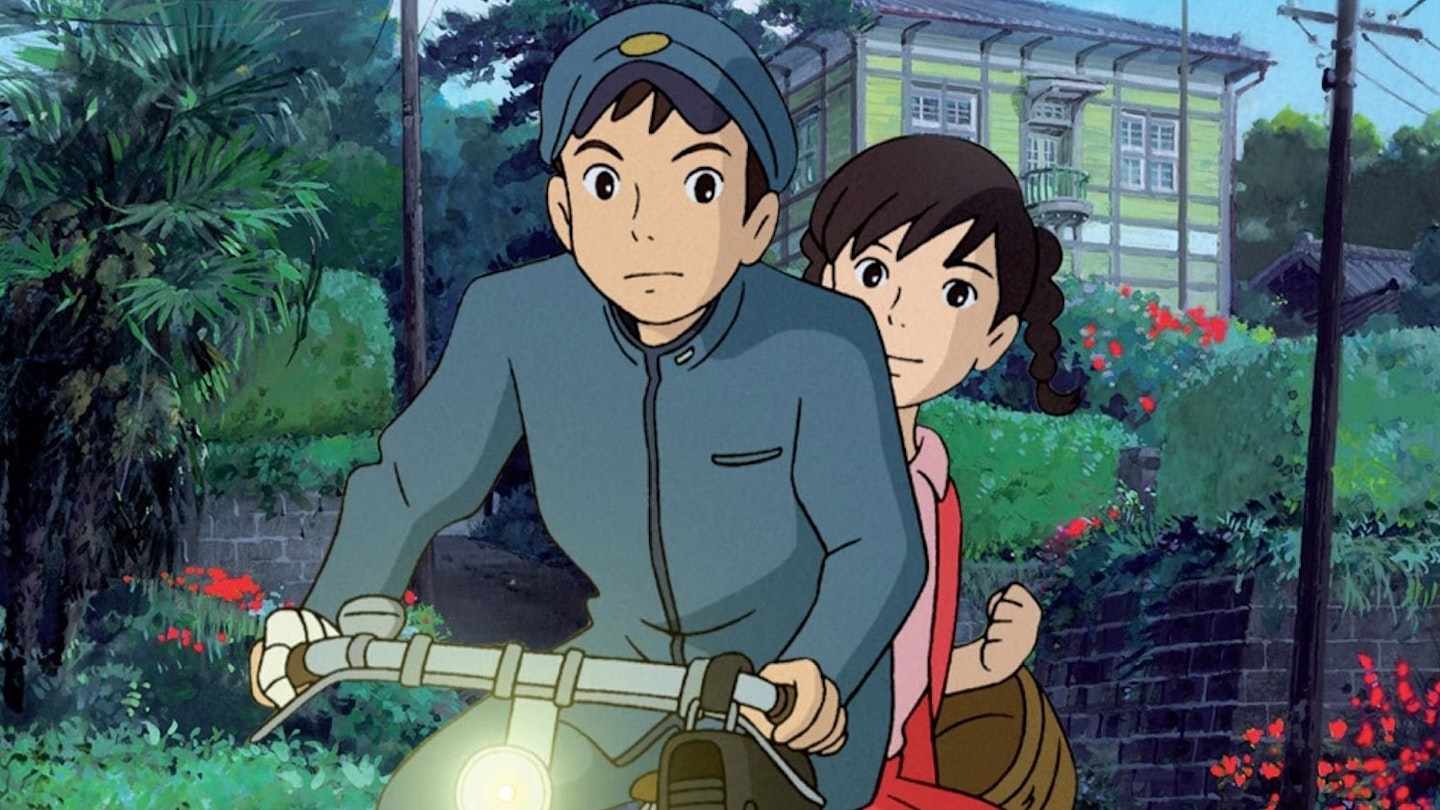 5 of 23
5 of 2319) From Up On Poppy Hill (2011)
After wobbling with the wild fantasy of Tales From Earthsea, the second film from Goro Miyazaki goes the other way entirely – Poppy Hill is a '60s-set melodrama rooted firmly in the real world. If the script, co-written by Hayao Miyazaki himself, piles on familial revelations and keeps the characters endearing – particularly the relationship between its central teens, flag-hoisting girl Umi and clubhouse member Shun – the film itself can't help but feel a little ordinary, especially by the studio's standards.
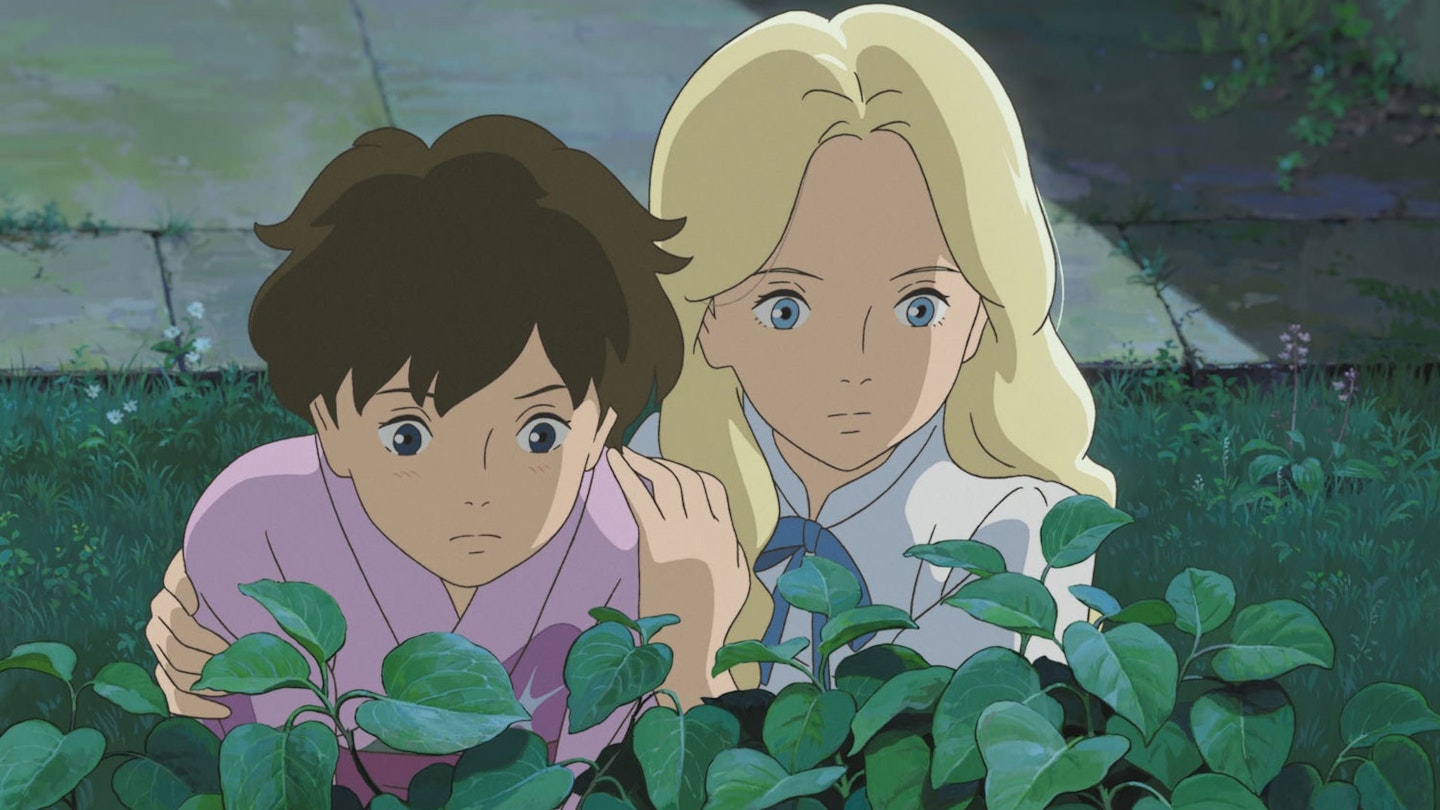 6 of 23
6 of 2318) When Marnie Was There (2014)
The final full-strength Ghibli movie (Dutch co-production The Red Turtle arrived shortly after), Hiromasa Yonebayashi's second film is a gentle, melancholy YA drama about friendship, family bonds, and reconciling with the past. As a farewell to an all-time-great animation house it's surprisingly low key, but it's suitably committed to its central characters: lonely asthmatic girl Anna and the mysterious blonde-haired Marnie she meets in an abandoned mansion. It looks gorgeous and hits on an emotional level – even if it isn't as daring or inventive as top-tier Ghibli.
 7 of 23
7 of 2317) Nausicaä Of The Valley Of The Wind (1984)
Technically it isn't a Ghibli movie, released before the studio was founded – but having been directed by Miyazaki and produced by Takahata, it's Ghibli in everything but name and has since been ushered into the canon. Nausicaä is pure, uncut Miyazaki fantasy, set in a post-post-apocalyptic world 1000 years after a cataclysmic event destroyed human civilisation – an anti-war movie and an eco-parable operating on a huge scale, all the more impressive for only being Miyazaki's second movie. There's a lot going on, but its headstrong namesake hero (and her fox-squirrel sidekick Teto) grounds it.
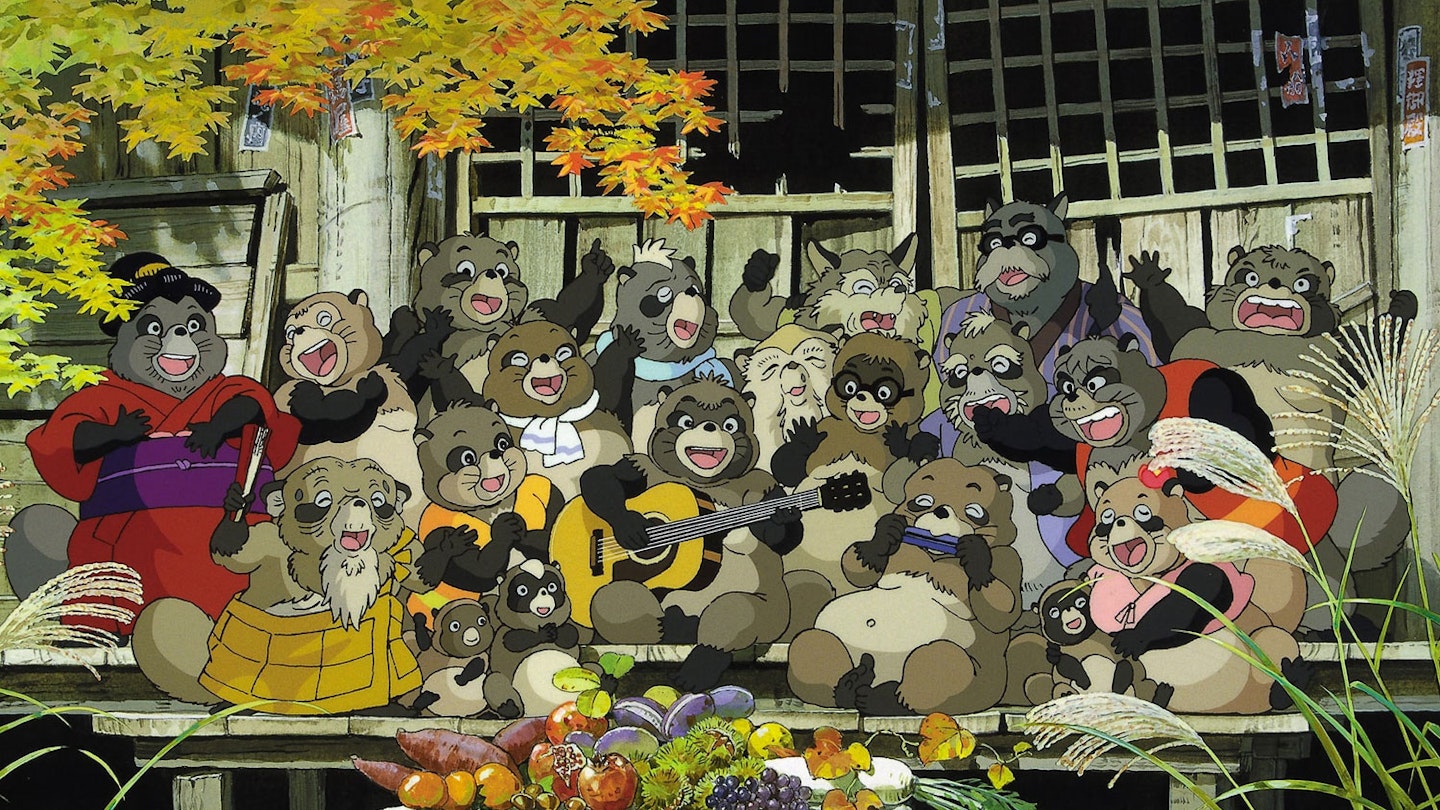 8 of 23
8 of 2316) Pom Poko (1994)
Pom Poko is absolutely bonkers. Takahata's tale of a tribe of shape-shifting tanuki raccoon-dogs with gigantic testicles is deeply strange – but it's genuinely funny and warm too, boundlessly creative and animated with cartoonish vibrancy. It playfully tackles Ghibli's most prominent theme – the need for human culture to co-exist in balance with the natural world – as the gang of cuddly creatures fight back against the deforestation that threatens their habitat. And did we mention that the tanukis' giant balls and extraordinarily stretchy scrotums are used as trampolines, parachutes, and even weapons?
 9 of 23
9 of 2315) Laputa: Castle In The Sky (1986)
Officially the very first Ghibli movie – and one that bears all of Miyazaki's hallmarks, even if he refined them in subsequent films. Featuring nods to classic fantasy literature (the floating island of the title is derived from Swift's Gulliver's Travels), spirited kids on a dangerous adventure, nefarious sky-pirates in flying death machines, otherworldly beings covered in lush greenery and more, it's Studio Ghibli 101 – and remains a rollocking romp, packed with creative flourishes and momentum-filled action.
 10 of 23
10 of 2314) Only Yesterday (1991)
One of the most grounded Ghibli movies sees Takahata swap swirling fantasy for a purely human-focused story. It follows its protagonist Taeko across two time periods – from her present-day life as a 27-year-old, to her youth as a schoolgirl in 1966, navigating the emotions and desires she experiences across those two very different times in her life. It's a quiet and reflective film, but one whose empathetic central character is richly envisioned, drawing in audiences to her story with ease.
 11 of 23
11 of 2313) Arrietty (2010)
In the hands of Hiromasa Yonebayashi (here making his directorial debut), the world of Mary Norton's The Borrowers proves ideal Ghibli fare. From the miniaturised world of its central family to the lush green expanse of the British countryside, it's a visual feast that makes the most of that inventive premise – and in its title character, it has a quintessential headstrong Ghibli heroine. If the narrative and its themes are somewhat simple, its playful sense of scale and sheer vibrancy is beautifully done.
 12 of 23
12 of 2312) Kiki's Delivery Service (1989)
With its skybound female protagonist, sarcastic feline sidekick, and gently whimsical tone, Kiki's Delivery Service is perhaps as important as My Neighbour Totoro in defining the Ghibli template. It's an easygoing adventure about a youngster venturing out into the world for the first time – in this case the 13-year-old witch of the title, who leaves magic school and ventures to a European-inspired town and launches a broomstick courier service. The stakes are low, which is entirely the point – but Kiki's world is rendered beautifully, with a soaring serenity to the flight sequences.
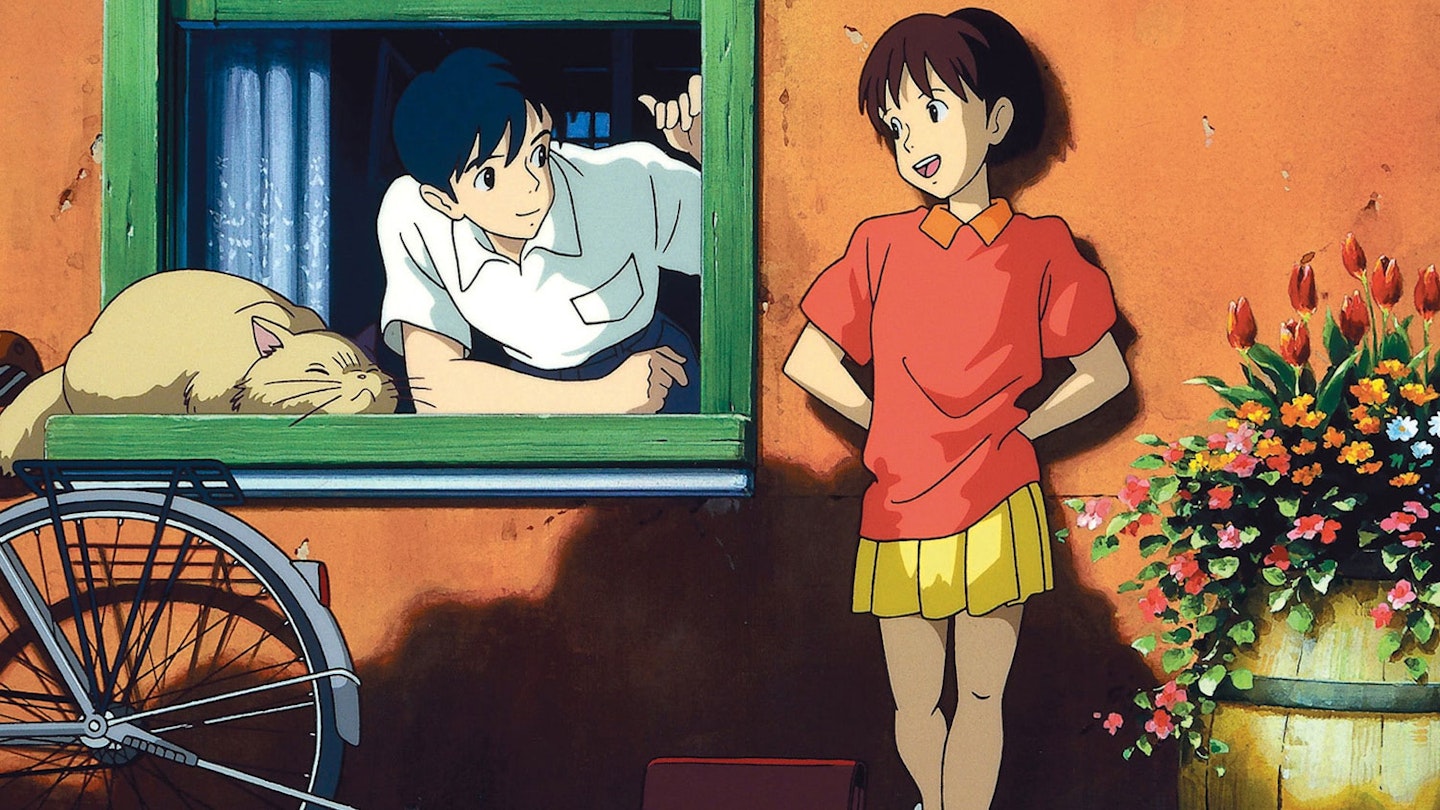 13 of 23
13 of 2311) Whisper Of The Heart (1995)
The first and only Studio Ghibli movie directed by Yoshifumi Kondo – the chosen successor to Miyazaki and Takahata, who passed away tragically young from an aneurism. But Whisper Of The Heart secured his legacy – a contemporary coming-of-age story about book-lover (and aspiring author) Shizuku and her growing attraction to Seiji, the boy she realises has checked out the same library books as her. It's a film about discovering the spark of creativity and feeling the thrill of first love, with a Japanese-language cover of John Denver's 'Take Me Home, Country Roads' to make your heart pop.
 14 of 23
14 of 2310) Porco Rosso (1992)
This mid-career Miyazaki is an all-out pulp adventure story, whose grouchy pilot protagonist happens to be cursed with the face of a pig. The filmmaker's love of all things airborne is given free rein in dazzling dogfighting sequences, set against brilliant blue skies and crystal seas – a visual palette of bold primary colours that extends to Porco's own deep-red plane. Beyond the old-school derring-do and gorgeous evocation of 1920s Italy, the film has a sweetly melancholic romantic streak. A pacy, porcine pleasure.
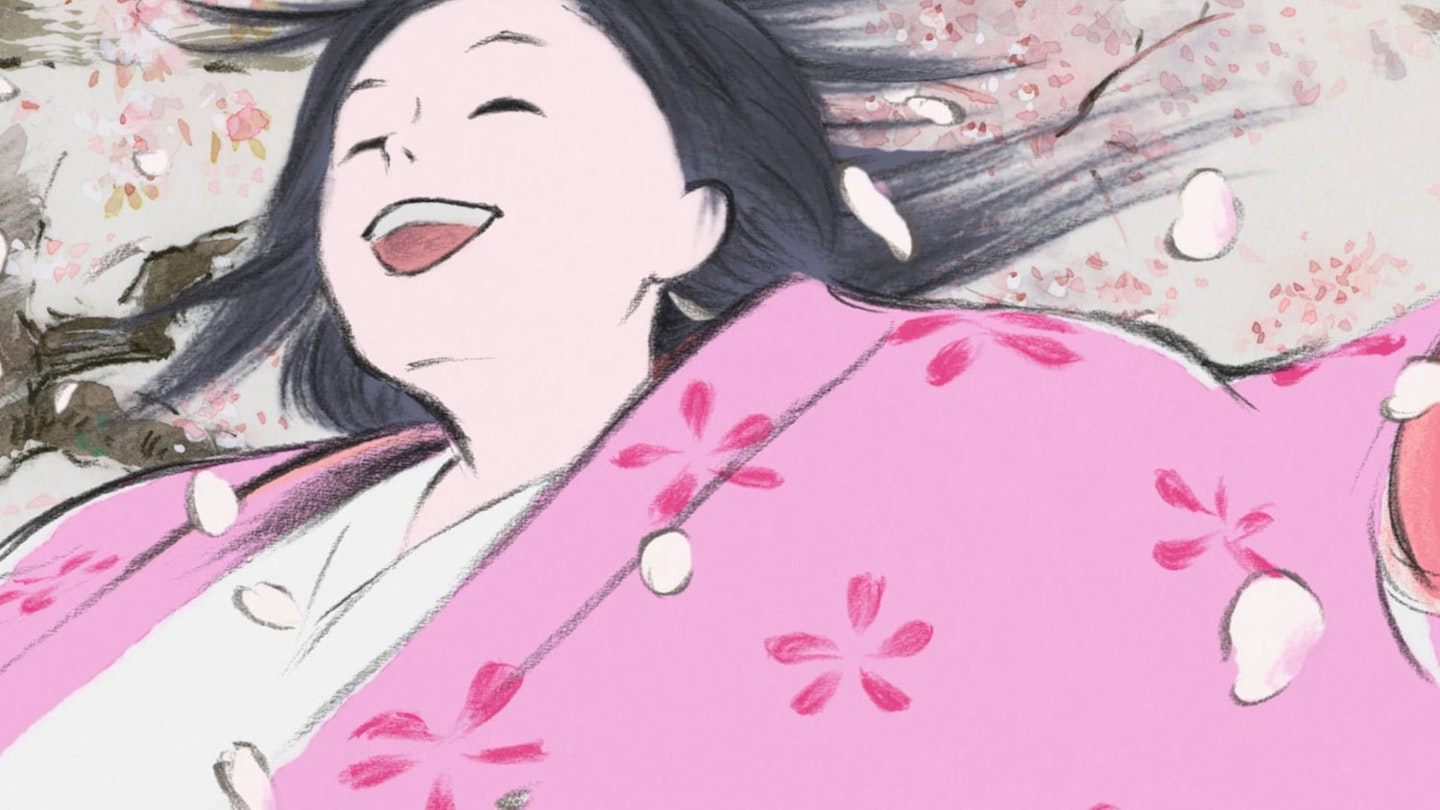 15 of 23
15 of 239) The Tale Of The Princess Kaguya (2013)
The final film from Isao Takahata is a thing of utter beauty – with a charcoal-meets-watercolour visual style unlike any other Ghibli film, or any other movie full-stop. The stunning impact of the imagery flowing across the screen never diminishes over its considerable near-150-minute runtime. It's the perfect way to tell a traditional Japanese folktale, in which a bamboo cutter discovers a tiny girl in a bamboo shoot, raising her into a young woman whose beauty becomes desired by high society. If it's not a thrilling whiz-bang adventure, it's undeniably an absolute work of art.
 16 of 23
16 of 238) The Red Turtle (2017)
The most recent (for now) Ghibli film is a departure for the studio – a co-production that comes from Dutch filmmaker Michaël Dudok de Wit. Even if it bears a completely different visual style – with an almost pencil-like texture and a distinct lack of anime-isms – thematically it's pure Ghibli: a quietly profound fable that explores the human experience and our relationship with nature. What begins as a simple shipwreck story becomes much more – an incredibly emotional experience told entirely without words, letting its meditative, abstract imagery do all of the talking.
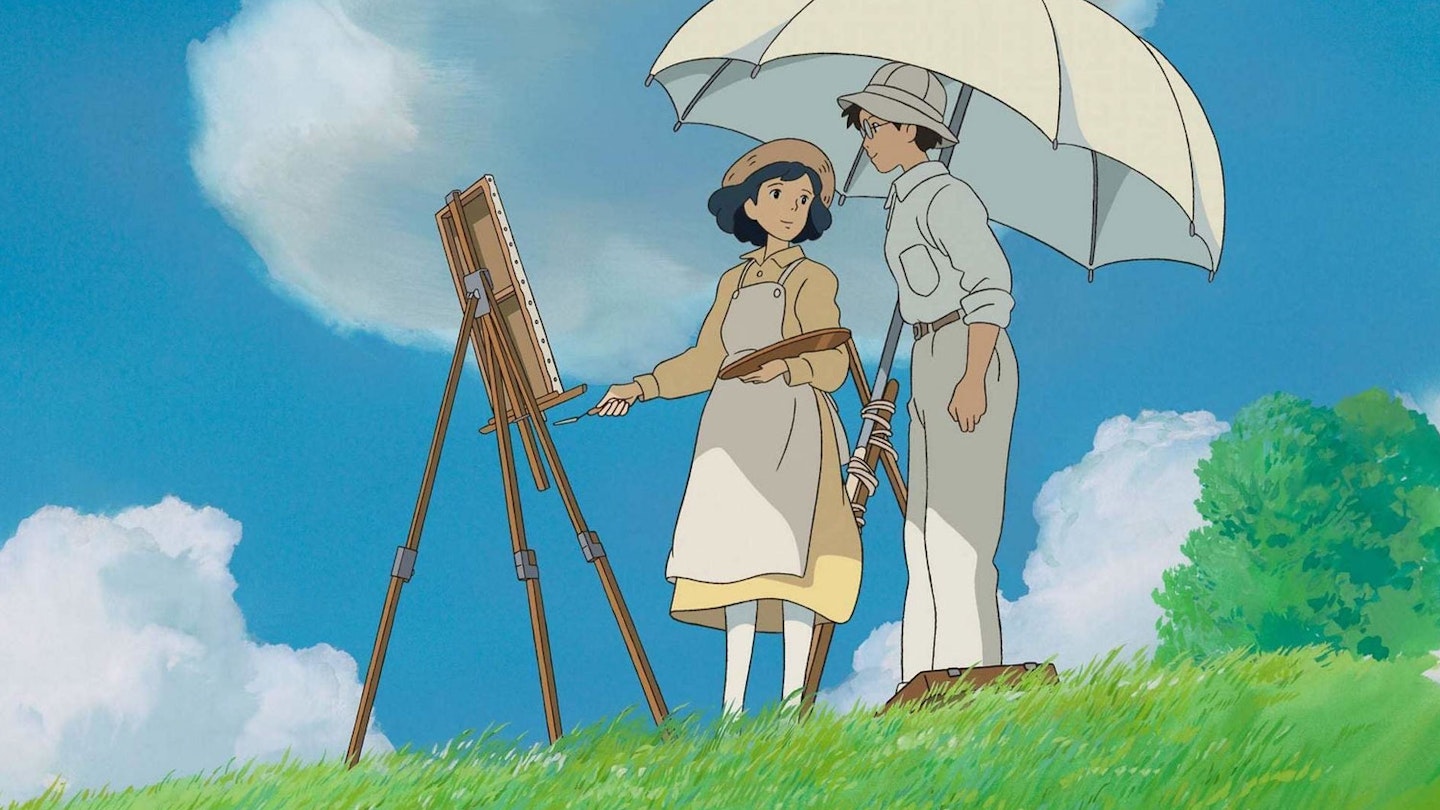 17 of 23
17 of 237) The Wind Rises (2013)
This supposed swansong from Miyazaki (who later announced his upcoming comeback) encompasses all of his cinematic obsessions: Japanese history, the power of dreams, the beauty of flying machines, and the impact of war. A sort-of biopic of Jiro Horikoshi, the designer of the Zero plane used by the Japanese airforce during World War II, it's a deeply moving and elegiac portrait of a man whose pure pursuit of his dreams faces corruption – dedicating his life to inventing a beautiful aircraft that will ultimately be used to cause murder and mass destruction. Sumptuous in every way – particularly its astonishing dream sequences.
 18 of 23
18 of 236) Howl's Moving Castle (2004)
Ghibli's follow-up to Spirited Away proved another mainstream success – a loose adaptation of Diana Wynne Jones' fantasy novel that acts as a launch-pad for Miyazaki's boundless creativity. The house of the title is a magnificent thing – a clanking, wheezing, steampunk-esque creation – while the burgeoning love story between the vain Howl (a wizard and sometime-birdperson) and central hero Sophie (who spends much of the runtime trapped in the body of an old woman) is swoon-worthy, bolstered by one of Joe Hisaishi's most magical scores.
 19 of 23
19 of 235) Ponyo (2008)
This quasi-adaptation of The Little Mermaid is sometimes (wrongfully) considered minor Miyazaki – it's ridiculously charming, with animation that dazzles even by Ghibli standards. It's a sweet, all-ages-appropriate story of a fish-girl who befriends a land-boy, and the underwater world proves a perfect canvas for Miyazaki's vibrant imagination. Its opening ascent from the seabed to the surface is one of the all-time-great Ghibli sequences, and for all its cuteness (don't even try resisting the film's jaunty theme) it finds the filmmaker understandably furious about humanity's pollution of the oceans.
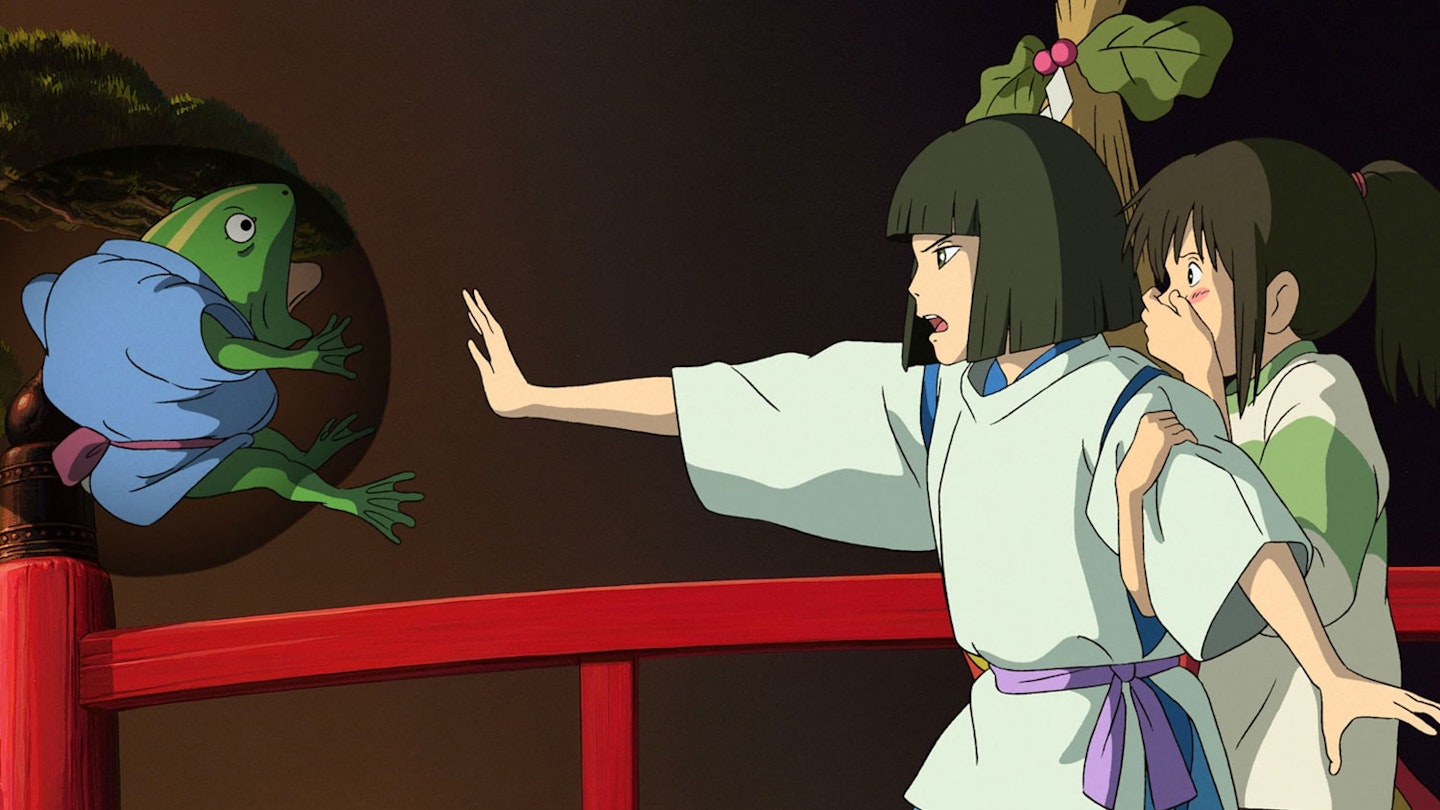 20 of 23
20 of 234) Spirited Away (2001)
The film that brought Ghibli to mainstream audiences. For a Western world raised on Disney traditions, Spirited Away offered something completely different – bearing an unapologetically-anime visual style and steeped in distinctly Japanese traditions. Just look at its grandiose bathhouse setting, its vibrant array of spirits, Haku's flying dragon form, and the complex, nuanced approach to morality that's far more complicated than the traditional good-vs-evil binary. Spirited Away feels truly mysterious and otherworldly with all kinds of unsettling imagery (Chihiro's transformed piggy parents, and the spectral No-Face spirit in particular), anchored by an accessible coming-of-age core.
 21 of 23
21 of 233) Grave Of The Fireflies (1983)
To say that Isao Takahata's war story is harrowing is to undersell its emotional impact – it's a beautiful but astonishingly bleak World War II film, telling the deeply human story of a teenager and his younger sister attempting to survive the conflict's final months. From its depictions of mass destruction and bombing raids, to the malnutrition faced by starving citizens, it's deeply upsetting – but a necessary film of remembrance, one that acknowledges a nation's pain in the hope that it can ultimately heal and avoid repeating tragic failures.
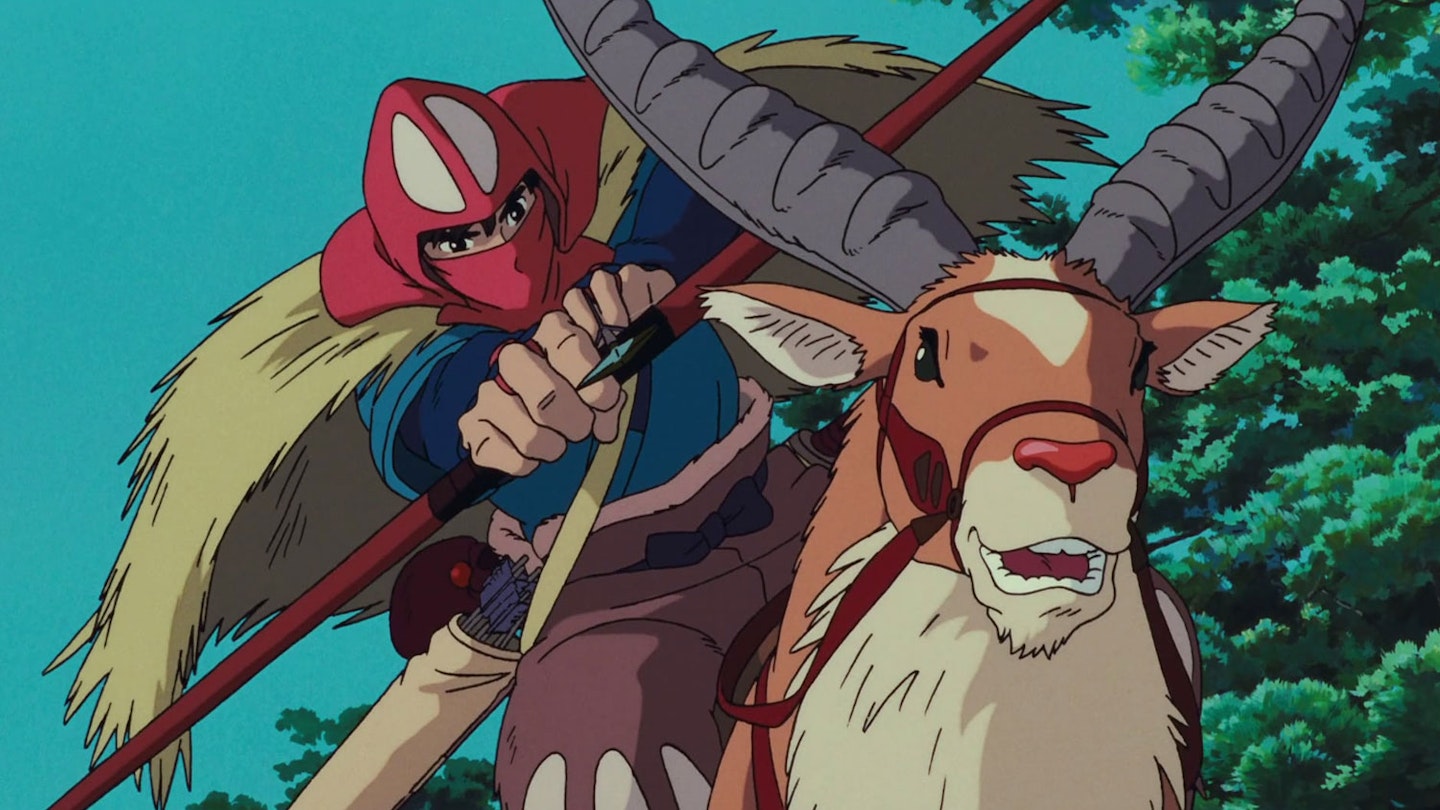 22 of 23
22 of 232) Princess Mononoke (1997)
This is Studio Ghibli at its most epic – a thunderous medieval fantasy akin to Lord Of The Rings in its mythological scope. It's darker and more violent than much of the studio's fare (prepare for exploding hogs and lopped limbs a-plenty) but the harshness is balanced out by spine-tingling imagery – try not to be transfixed by the eerie beauty of the forest spirit. Taking in warring human factions, ancient oozing curses, giant wolf tribes, and marauding demons, it's a monumental piece of folklore, thrillingly realised by Miyazaki. Bonus: its English-language dub is brilliantly handled by none other than Neil Gaiman.
 23 of 23
23 of 231) My Neighbour Totoro (1988)
There's a reason the grand, furry, forest-dwelling Totoro ultimately became Ghibli's mascot – Miyazaki's ode to childhood is a thing of wonder. My Neighbour Totoro is a film without a villain, a warm and cosy remembrance of youth, a love letter to rural Japan, and a paean to the magical things that exist just out of sight. Bursting with iconic creations, from its array of fuzzy Totoros, to the googly-eyed Soot Sprites and the fantastical Catbus, the film has a pure spirit that cannot be denied. If there are hints of darkness – the illness of Satsuki and Mei's mother, hospital-bound for the duration of the film – it remains on the fringes. Ludicrously loveable.
READ MORE: Miyazaki On Miyazaki: The Animation Genius On His Movies
